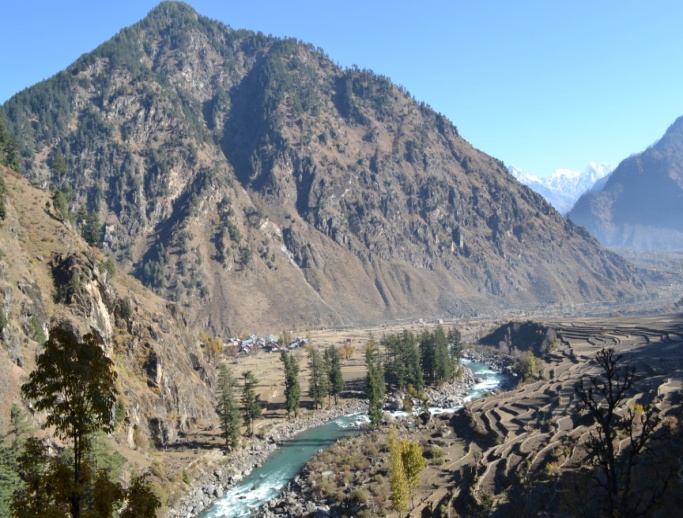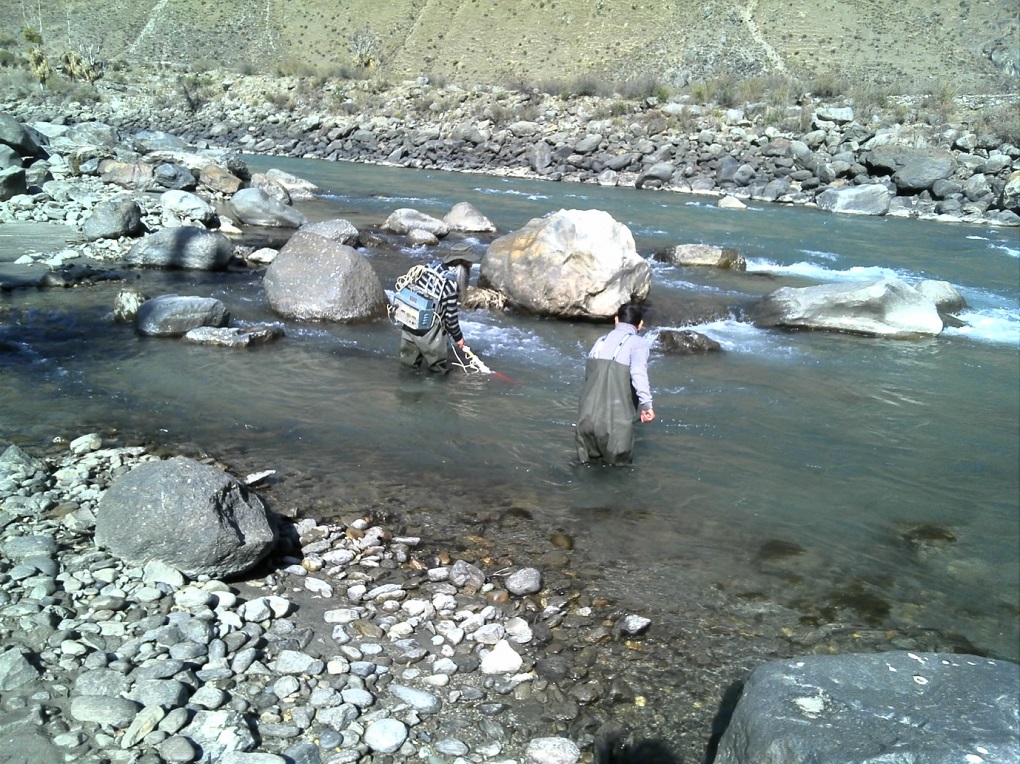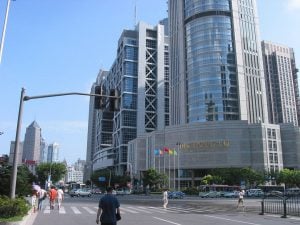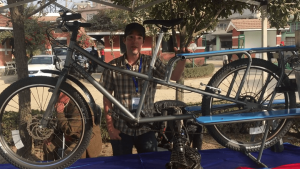The Indian Ministry of Environment and Forests (MoEFF) has given a green signal to the 800 MW Bursar Hydroelectric Project in the Himalayan state of Jammu & Kashmir (J&K) “without fulfilling some basic environmental norms” which were highlighted by its own expert committee in recent weeks.
The proposed Bursar Hydroelectric Project will be located near the Pakal village on the Marusudar, one of the major tributaries of Chenab river.
According to the project executing agency, the National Hydroelectric Power Corporation (NHPC), the Bursar HEP is a storage project in which the flow of water can be regulated not only to the benefit of this project, but all downstream projects. These include Pakal Dul, Dul Hasti, Rattle, Baglihar, Sawalkot, and Salal hydroelectric projects. This will enhance the power generation potential of all these downstream projects during the lean flow months.
The Bursar HEP, estimated to incur a cost of INR 168 billion (USD 2.5 billion) has been declared a national project by the government of India. According to the government of India, this project has been designed to utilise the provisions of Indus Water Treaty (IWT) between India and Pakistan as mentioned in Annexure-E of the 1960 treaty, which allows the construction of limited storage capacity.
As per the details of the project, water storage of 618 million cubic metres (MCM) will be created in the basin as permitted under IWT.
A total of 1,779 hectares (17.79 square kilometres) of land is required for the project out of which 1,149 hectares (11.49 square kilometres) is forest land. The project envisages the construction of a 265 metre high concrete gravity dam to generate hydropower with an installed capacity of 800 MW. Total submergence area is about 1,443 hectares (14.43 square kilometres), of which 883 hectares (8.83 square kilometres).
Hasty clearance
As per the minutes of the meeting held on October 24, 2017, the Expert Appraisal Committee (EAC) of the MoEFF had decided that a sub-committee of the EAC would carry out a site-visit of the Bursar project. After its visit the sub-committee would submit a report about the project after which the proposal for construction of Bursar hydro-power project will be reconsidered for an environmental clearance.
“The EAC members felt that the proposed location is located in a rich biodiversity area, Kishtwar High Altitude National Park is located within 10 km radius of the project site, addressing of deep pools and their season migratory path in between dam to power house for fish spawning, etc. After submission of the site visit report of the Sub-committee, the proposal will again be reconsidered before the EAC for grant of EC,” reads a section in the minutes of the meeting.

“The project involves about 1,149 ha of forestland. Forest clearance should be obtained as per the prevailing norms of Government of Jammu & Kashmir… The project is outside the project boundary of Kishtwar High Altitude National Park (KHANP). However, KHANP is within the 10 km radius of the project site… Endemic fish species and spawning grounds availability to be indicated from the secondary sources in the area including the zone of influence, if any,” it added.
However the site-visit, which was supposed to be undertaken in November, did not take place and the forest clearance regarding 1,149 ha (11.49 square kilometres) of forest land from J&K’s forest department has also not been issued. But the EAC held another meeting on December 5, 2017 in which it said that the environmental clearance be granted.
“The EAC had earlier suggested a site visit for proposed project by a Subcommittee to be carried out during early November, 2017 and submit a report on the project based on the ToR suggested for the Sub-committee. However, the members of the Sub-committee could not visit the project due to very harsh climate conditions in the area during November, 2017. The Member Secretary informed the Committee that the next visit would be possible only after June 2018 as by that time, weather conditions will become fairly good. As the grant of Environmental Clearance will be delayed by more than 7 months if we wait, the Committee took note of it and after deliberation, site visit to the project site has been dropped and EAC recommended for grant of EC to the proposed project,” read the minutes of the December 5 meeting.
Environmental concerns ignored
Himanshu Thakkar, Coordinator of South Asia Network on Dams, Rivers & People (SANDRP) told thethirdpole.net that the decision of recommending an environmental clearance to the Bursar project by the EAC “is totally wrong, as it is against the basic environmental norms and against the decision of the same committee’s previous meeting.”
“To turn around in next meeting and say that since a site visit is now not possible, the EC is recommended, is totally against the norms since it shows that EAC has failed to address the important reasons why the site visit was necessary,” he said.
According to Thakkar, the site visit should have happened as weather was conducive for the team to visit at least for two weeks after the October 24 decision. “It is also shocking since the EAC knew about the weather situation when they took the decision on Oct 24. This decision of EAC would not stand legal scrutiny,” he observed.
Thakkar also questioned the EAC decision “taken on the basis of a shoddy EIA report” which, he said, misses many key aspects.
“For example, there is no options-assessment or the assessment of how the project will perform in the changing climate and how the project will add to climate change effects and destroy adaption capacity in changing climate. Also, there is no cumulative impact assessment and carrying capacity study. Disaster Impact Assessment is also missing while biodiversity impact assessment, downstream impact assessment and social impact assessment have not been adequately assessed,” Thakkar said.
He argued that public hearings were also flawed since the people did not have the EIA in the language they could understand. Without understanding the EIA, how could they have participated in the public hearings in an informed way?
A member of the team which carried out the EIA said on the condition of anonymity that the people of the area raised slogans during one of the public hearings in September as they said that the project is taking away all the sources of their livelihood of hundreds of families. The EIA report has bracketed such families as “partially impacted”.
According to the EIA report of the project, a total of 18 hamlets are going to be affected directly or indirectly due to various Project activities. “All of the affected villages are going to be affected partially however, some hamlets would come under the reservoir area,” says the EIA report.
As per the EIA report, the total population of affected villages is 16,943 and spread over an area of 13,368 ha (133.68 square kilometres) distributed among 3,193 households.
Cascading projects on the Chenab
India has planned a number of hydro power projects on the Chenab river apart from the already existing projects such as Baghlihar I and II and Dul Hasti. The upcoming projects are Sawalkote (1,856 MW), Kirthai I (390 MW), Kirthai II (930 MW), Pakal Dul (1,000 MW), Kwar (540 MW), Kiru (624 MW), Bursar (800 MW) in the Chenab basin.
Environmental experts have raised concerns about the construction of a series of big hydro power projects on a single river basin.
“Since there are several projects in the pipeline in a cascading fashion in Chenab (including Bursar), it is important to have an assessment of the cumulative impacts of these projects on environment. This was not in the ToRs set by the MoEFF for Bursar or the adjacent Pakul Dal project. Therefore, it has not been assessed for them. Once operational, these projects will have a multiplier impact (mostly negative) on the environment of the region which needs to be assessed before providing the environmental clearance to the projects in the Chenab valley,” said one of the members of a team in Kashmir University that has prepared the EIA report for the Bursar project.
“We had raised strong objections about Sawalkote which have not been considered. For Bursar also, we have some concerns. There are concerns about the local environment and ecology, environmental flows, seismic concerns and others”
Thakkar says that under the current circumstances, there is no real reason to push big hydro anywhere in India. “There are a number of simple reasons for this. (1) India is power surplus and is likely to remain power surplus. (2) Large number of big hydro projects are stranded due to financial non viability (3) Cost of electricity from solar and wind is below INR 3 (USD 0.05) per unit and there is huge potential for solar and wind (4) Cost of any new big hydro now being taken up will not be less than INR 8 (USD 0.13) per unit even if the environment and social aspects are not taken into account correctly,” Thakkar said.
“This is the reason why private sector is no longer interested in big hydro power projects and has exited the projects from Chenab valley in Himachal Pradesh,” he added.
Athar Parvaiz is a freelance journalist and researcher based in J&K, he can be followed on twitter at: @AtharParvaiz



![A Nepali farmer holds locally grown coffee beans in his hands [image by: Abhaya Raj Joshi]](https://dialogue.earth/content/uploads/2018/01/himalayan-arabica-300x128.jpg)





